| This section contains information relating to our associations' professional annual meetings. These meetings are vital not only for the financial health of our organizations, but they also represent great opportunities for all of us to gain new skills, to share academic or research interests, and to acquire continuing education hours for certification.
We continue to expand this section to include recent manufacturer press releases and other noteworthy items of information for our JBC subscribers and Association members. Please let us know how we may improve this section, as well as other components of your Journal.
The JBC hopes that you will take advantage of these annual meetings and the opportunities they offer, and we encourage you to support your professional association.
Upcoming 2008 Meetings

Society for Biomolecular Sciences
14th Annual Conference & Exhibition
Enhancing Research Productivity:
Quality Tools, Leads and Candidates
April 6 – 10, 2008
America’s Center
701 Convention Plaza
St. Louis, MO 63101
The Society for Biomolecular Sciences invites you to the SBS 14th Annual Conference & Exhibition to be held in St. Louis, MO, April 6-10, 2008. The theme for the 2008 conference is Enhancing Research Productivity: Quality Tools, Leads & Candidates.
We have endeavored to include podium sessions that address both high-throughput screening (HTS) and lead characterization/optimization, as well as three sessions that are focused on disease intervention and relevant therapeutic targets, specifically in cancer, inflammation and CNS disorders. High-throughput screening for the discovery of new leads has been in practice for fifteen years in industry and we plan to highlight advances in the development of new therapeutics from these efforts.
For more information contact Marietta Manoni at 203-743-1336, or email her at mmanoni@sbsonline.org
www.sbsonline.org

Society for Modeling and Simulation International (SCS)
17th International Conference on Health Sciences Simulation
2008 Spring Simulation Multiconference
April 13- 16, 2008
Ottawa, Canada
Contact: James G. Anderson, Ph.D.; 765-494-4703; andersonj@purdue.edu
Godefridus G. van Merode, Ph.D.; 31 43 388 5950; F.vanMerode@beoz.unimaas.nl
www.scs.org/springsim

PMA Australia
2008 Imaging Technology Show
Brisbane Convention and Exhibition Centre
Brisbane, Australia
May 29 – June 1, 2008
The Event
The Photo Marketing Association International has again joined forces with the Photo Imaging Council of Australia to promote for the second time the new show concept for the Asia-Pacific photo imaging industry.
The first PMA Australia show was held in Melbourne last May and set new records of attendance for retail, business, professional and consumer categories. Now the photo industry has decided to hold its next PMA Australia Imaging Technology Show at the Brisbane Convention & Exhibition Centre, May 30 -June 1, 2008. The popular DIMA Day will again be held on Thursday May 29, the day before the exhibition opens. This year, the show organizers are confident they will attract nearly 20,000 visitors.
The show is a must attend event for photo trade, professional photographers, graphic arts, government, business and keen photography hobbyists.
Ground-breaking Opportunities
It’s a photo industry event unlike any other. The PMA Australia 2008 Imaging Technology Show delivers four-days of ground-breaking business ideas and the latest product innovations. With new opportunities emerging, the PMA Australia 2008 Imaging Technology Show has the strategies to make the memories market yours.
Discover the latest ideas and trends at sessions specializing in photo retail, consumer electronics, professional photography, and more. Start your experience with both the Emerging Technology Day and the Home Mobile Entertainment Day on May 29 before PMA and PICA open the Imaging Technology Show on May 30.
Who Should Attend?
PMA welcomes the entire memories market to attend this “can’t-miss” event, including: photo retailers, professional photographers, consumer electronics outlets, custom framers, scrapbook retailers, photo educators, and press.
Exhibiting at the Imaging Technology Show
For information on exhibiting at the Imaging Technology Show, visit the PMA/PICA website at www.pmaaustralia.com.au
PMA Australia 2008 Imaging Technology Show Schedule:
DIMA Emerging Technology Day May 29, 2008
Home & Mobile Entertainment Day May 29, 2008
Convention and Trade Show May 30 – June 1, 2008

InfoComm 08
Conference Dates: June 14-20, 2008
Exhibition Dates: June 18-20, 2008
Las Vegas Convention Center, North and Central Halls
InfoComm is the leading business-to-business marketplace for display, projection, audio, conferencing, lighting and staging, digital signage, Internet streaming and networked presentation and communications systems.
Registration: Will go live in early 2008 - get added to our mailing list at customerservice@infocomm.org
The infoComm Conference will include 250+ courses from basic through more advanced levels. These sessions will cover audio, video, projection, digital signage, design, certification, conferencing, AV-IT integration, and much more. The conference will also include the Institute for Professional Development classes (June 14-16). These are both intensive one-day sessions and 2-4 hour courses.
Exhibition: June 18-20, 2008, North and Central Halls, Las Vegas Convention Center
Exhibit Space: Contact exhibitsales@infocomm.org
Attendee registration opens in January.
For additional information, please click here.

49th International Conference on
Health and Science Communications
June 18 – 21, 2008
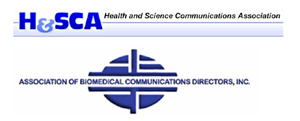
Combined Conference Hosted by Yale University, New Haven, CT
Please join us for the 49th Annual Conference on Health & Science Communications in New Haven, CT in June 2008. The meeting will be held at Yale University and the newly restored Omni New Haven Hotel.
This year's meeting will focus on creativity in the wake of new technologies, and promises to offer new tips for keeping those creative juices flowing in state-of-the-art health and science communications. In addition to the usual networking opportunities, there will be much to explore on the campus of one of the nation's oldest, most prestigious universities as well as southern New England.
Information regarding meeting registration and program will be available online soon. Please click here.
Hope to see you there!
Mark Saba
HeSCA Meeting Chairman
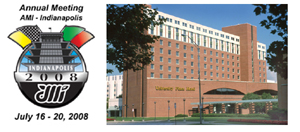
Association of Medical Illustrators 63rd Annual Conference
July 16 - 20, 2008 - Indianapolis, Indiana
AMI INDY 2008 Come to Indy, and Accelerate Your Career
The 2008 Annual meeting in Indianapolis will offer an diverse selection of educational sessions and social events that you simply won't want to miss. We have planned a stellar group of speakers and presenters for AMI-Indy, offering you a wealth of continuing education approved art, science, and business sessions and workshops. We have planned the science portion of the program in the areas of orthopaedics, sports medicine, adipose-derived stem cell research, and cancer treatment. The illustration topics will include both traditional and digital techniques, with an emphasis on problem solving. The 2008 Techniques Showcase will also feature traditional and computer-based illustration.
Our 2008 meeting will take place at the upscale University Place Hotel and Conference Center is located near downtown Indianapolis on the combined campus of Indiana University - Purdue University at Indianapolis (IUPUI). The world-class Indiana University Medical Center and Lilly Medical Library are within easy walking distance. Indianapolis features world-class universities, hospitals, and thriving life science initiatives. As reported in "Growing the Nation's Bioscience Sector: State Bioscience Initiatives 2006," Indiana was ranked as a national leader in three of the four bioscience sectors. Indiana's roots in the biomedical device sector are deep, and Indiana is home to three of the five of the world's largest manufactures of artificial hip and knee joints. Come to Indy in 2008 to see and hear what Indiana's life sciences evolution is all about.

Our host hotel on the campus of IUPUI is located just minutes away from downtown restaurants and the downtown shopping showcase, Circle Center Mall. Our meeting venue is near the Indianapolis Museum of Art, the Oldfields - Lilly House & Gardens, the Eiteljorg Museum of American Indian and Western Art, the Indiana State Museum, the IMAX Theater, the Children's Museum, the NCAA National Headquarters and Hall of Champions, Victory Field (baseball), and the Indianapolis Symphony Orchestra performing at the Hilbert Circle Theatre.
Of course, no trip to Indianapolis would be complete without a visit to the Indianapolis Motor Speedway and IMS Hall of Fame Museum located on the historic grounds of the Indianapolis Motor Speedway. Come to Indianapolis to discover how the city's love affair with racing all started, where automotive racing has been, and where it's going.
Come a day early, and enjoy the sights and sounds of Indianapolis.
For more information, please watch for our Indianapolis meeting updates at:
http://www.ami.org/2007/
Hope to see you in Indy!
Gary Schnitz and Tom Weinzerl
AMI Meeting Co-Chairmen
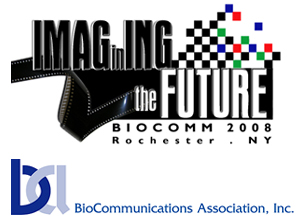
BioCommunications Association 78th Annual Meeting
July 20 - 25, 2008 - Rochester, New York
Held annually in North America, this international meeting includes a packed program of seminars,
workshops, a juried media salon, and commercial exhibits to provide attendees with inspiration and the
latest information on visual media in the life sciences.
Highlights include:
- Salon Awards for BioImages during the Opening Reception
- An afternoon at George Eastman House
- Three days of Scientific Program
- Steve Sasson, inventor of the digital camera – Pioneer Lecturer
- An evening Social Event
- Open Portfolio Session and Review along with an Ice Cream Social
- A full day of Hands-on Workshops at Rochester Institute of Technology (RIT)
- The Honors Reception and Banquet (Thursday evening) This is the concluding event of the
meeting with special honors presented including the Schmidt Award, Creer Award, Fellowships
and other honors.
BIOCOMM 2008 will be hosted at the Strathallan Hotel (soon to be renamed the Hyatt Summerfield
Suites) in Rochester, NY. The hotel is conveniently located in the heart of Rochester’s renowned
cultural district, close to neighborhood restaurants and George Eastman House, and yet is only minutes from downtown Rochester.
Some of the amenities of the hotel include: 156 spacious suites, business center services, full service
restaurant, fitness center w/sauna, high-speed internet access, off-street parking, and complimentary
transportation to and from the airport.
Hotel rates for the meeting will be: Studios $109 and Suites $119. These rates include a hot breakfast
every morning. Rates are good for three days before and after the meeting.
For more information, please watch for meeting updates at:
http://www.bca.org/annual_meeting/biocomm_2008/
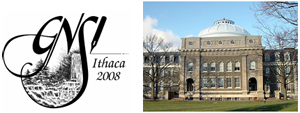
2008 GNSI National Conference
Ithaca College, Ithaca, New York
July 20-26, 2008
PROGRAM:
The program committee has been beating the bushes and scouring the gorges for exciting and interesting events to make this year’s meeting a memorable one. We are well underway in scheduling a variety of presentations on topics as varied as upstate NY geology, rare books art and manuscripts collections, explorations of digital software and techniques, workshops devoted to traditional media as well as combined traditional and digital methods. Web design, web marketing, and other approaches to self-promotion are included in the program.
We currently have workshop offerings in traditional media techniques using carbon dust, graphite pencil, colored pencil and acrylics. Adobe Photoshop both beginner and advanced, Adobe Illustrator for beginners and advanced users, various 3D software and animation programs are also in the offerings. Three 2 hour Forums, followed by question and answer periods, are in the works in the areas of Business, The Digital Studio and Paleo Illustration. Details to come in the next newsletters. Program ideas, suggestions and presentation offerings from our members are always welcome.
Send emails to Paula DiSanto Bensadoun at pdisanto@twcny.rr.com
http://www.gnsifingerlakes.org/
AUCTION:
It's not early to start thinking about what to bring to the GNSI Auction! The time is coming to pass on the baton of the famous lizard t-shirt! This much-anticipated event is held each year during the Annual Meeting to raise money for the Education Fund, which benefits outreach and educational activities for GNSI chapters around the country. As always, there will be a silent auction as well as a fun and entertaining live auction. All the items are donated by GNSI members...please consider donating anything that might interest your fellow members: art supplies, books, cards or clothing featuring your artwork, prints and paintings.
2008 GNSI MEMBER'S EXHIBIT:
Our Annual Exhibit, running from July 13 to July 26, 2008, is open to all members, and we encourage you to enter one or two of your scientific or nature-related illustrations to be part of the 2008 conference. This is a great way to get your work seen and to make new connections with other illustrators. We have secured a wonderful space in which to display your work: the Hartell Gallery at Cornell University – the primary exhibit space for Cornell’s College of Art, Architecture, and Planning.
The art entries form for submitting pieces appears in the January Newsletter, and can also be downloaded from this site. Remember, your entries must be postmarked by March 21, 2008! Don’t hesitate; send your entries now!
The juried exhibit will be for original artwork, including 3D; gallery-quality prints, (preferably giclée (inkjet)) of traditional artwork; and also digitally created or -modified art. Please note that for jurying your entries, high-quality slides and/or digital files are essential. The jury will consist of three highly skilled artists, designers, and scientists, who are not current members of GNSI, but are creators or users of the type of art we make.

The Congress Plaza Hotel & Convention Center
520 South Michigan Avenue
Chicago, Illinois
June 20-21, 2008
The Mid-Year Educational Program will be held in Chicago, Illinois, 20-21 June 2008, at the Congress Plaza and Convention Center. There is a registration discount for OPS members. If you are not currently an OPS member, you may take advantage of the member rate by visiting the OPS website and joining our vibrant organization. Full registration includes both days of courses and the welcoming reception. Single day registration is also available.
The Ophthalmic Photographers' Society is a non-profit organization dedicated to a highly specialized form of medical photography pertaining to the field of ophthalmology. The main objectives of the Society are to provide primary and continuing education in the field of ophthalmic photography, to set and maintain standards for the profession through a multi-level certification program, and to promote scientific advancement in the technology.
For more information visit:
http://www.opsweb.org/Educat/MidYear/index.html

SPIE - Society of Photographic Instrumentation Engineers
SPIE Optics + Photonics 2008
August 10 – 14, 2008
San Diego Convention Center
San Diego, CA
SPIE is an international society advancing an interdisciplinary approach to the science and application of light. Conference presentations will be given in the areas of NanoScience and Engineering, Solar Energy and Applications, Photonic Devices, and Optical Engineering.
http://spie.org/optics-photonics.xml

SIGGRAPH 2008 | Evolve
35th International Conference on Computer Graphics
and Interactive Techniques
August 11 - 15, 2008
Los Angeles, California
SIGGRAPH 2008 is evolving along with the computer graphics and interactive techniques community. We're dissolving the borders between traditional SIGGRAPH programs to create a more fluid, interdisciplinary conference. And we're offering presenters more flexible options for sharing their work.
Join us in Los Angeles in August 2008 for the highest quality, most timely educational experiences the community has to offer, presented by the most powerful and most engaging leaders in computer graphics and interactive techniques.
For more information, please watch for meeting updates at:
http://www.siggraph.org/s2008/

Frontiers in Optics 2008
Laser Science XXIV
October 10 - 23, 2008
Optical Society of America (OSA)
Rochester Convention Center
Rochester, NY
Frontiers in Optics (FiO) 2008, the longest-standing meeting in optics and photonics, has a remarkable history of presenting top-quality research presentations, symposia and special events.
Presenting over 150 sessions and nearly 800 technical presentations annually, the FiO conference will include some of the most innovative research in the field. More than 1,300 attendees convened during the 2007 meeting's keynote sessions, technical talks, exhibition and networking events. In addition, 50 companies participated in the exhibition, showcasing some of the newest technologies available
Technical Conference: October 19-23, 2008
Exhibit: October 21-22, 2008 at the Rochester Riverside Convention Center
For more information on the 2007 meeting, contact Colleen Morrison at 202-416-1437, or email her at cmorri@osa.org
www.osa.org/meetings/annual/
|
|
 |
|
Related Association News
The Illustrators' Partnership of America
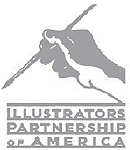
The Association of Medical Illustrators, in conjunction with The Society of Illustrators, The National Cartoonists Society, The American Society of Architectural Illustrators, and The Illustrators' Partnership of America, continues to seek better ways to market and license the rights to their creative work.
One of the goals of this working coalition is still to explore the possibility of collecting and pooling artists' reprographic fees in order to create a collective rights administration to return reproduction royalties to illustrators.
Since the birth of the Illustrators' Partnership of America, the organization's key mission has been the development of a licensing agency that would truly represent the best interests of American artists and illustrators.
For more information about the Illustrators' Partnership of America, visit the IPA Website at http://www.illustratorspartnership.org/
For information about protecting your copyrights:
http://www.copyright.com/
http://www.ifrro.org/
http://www.copyright.gov/
http://www.copyright.gov/circs/circ1.html
Proposed Legislation Could Orphan Copyrights
On January 23, 2006 the U.S. Copyright Office issued their Orphan Works Report, outlining their recommendations to Congress for changes to the 1976 Copyright Act. While we know the Copyright Office made a sincere effort to solve the problem of copyright availability for users, we believe these proposed changes will undermine copyright protections for artists.
The report defines an "orphan work" as any work where the author is unidentifiable or unlocatable, regardless of the age of the work. It extends to both published and unpublished works, and includes both U.S. and foreign works. At 127 pages, the report is too long to analyze in detail here, but you can access it at the Copyright Office website. For those who wish to cut to the chase, the explicit language for their proposed changes can be found on page 127.
http://www.copyright.gov/orphan/orphan-report-full.pdf
To understand the effect these changes may have, consider what the 1976 Act currently guarantees to you. It guarantees that you have the exclusive right to authorize or withhold reproduction of your work and to create derivative works. It guarantees this from the moment you fix the work in a tangible form, and it guarantees this without imposing formalities such as a copyright mark or registration. The Berne Convention for the Protection of Literary and Artistic Works forbids such formalities as a condition on the enjoyment and exercise of copyright. The U.S. formally acceded to Berne in 1988.
Placing Relevant Information on Your Work
The legislation proposed by the Orphan Works Study would not officially return artists to pre-Berne status, but for practical purposes, it would have that effect. It would not require you to mark each picture with a copyright notice and your name. But failure to do so on your part (or your publishers') could be used by infringers to justify their own use of your work. Here's the relevant part of the Copyright Office's explanation:
"For authors and copyright owners, marking copies of their works with identifying information is likely the most significant step they can take to avoid the work falling into the orphan works category. This is particularly true for works of visual art, like photographs and illustrations, that otherwise do not contain text or other information that a user can rely on to help determine the identity of the copyright owner. Nothing in the Office's recommendation would make such markings mandatory . . . Nevertheless, the presence and quality of the information on particular copies will be a highly relevant fact as to whether a reasonable search will find the copyright owner." (p. 9, emphasis added)
In other words, the "information" that has been placed on your work will be a "highly relevant fact" in determining - for legal purposes - whether a user has made a "reasonable search" to find you before he or she uses your work. But since the report doesn't set objective standards for what constitutes a "reasonable search," it paves the way for endless ambiguity. What do you do if a user infringes your work after what he regards as a reasonable effort to find you? What if someone simply uses your work on the grounds that you may not find out about it, and if you do, justifies his actions by citing the "fact" that your work lacked "relevant information?"
No Penalties For Infringing Orphan Work
Those who have demanded this legislation have argued that users should not be subject to penalties for infringing orphan work. They say that the public should be encouraged to use this work and that penalties would discourage use. The Copyright Office has agreed:
"Our recommendation follows this suggestion by limiting the possible monetary relief in these cases to only 'reasonable compensation' which is intended to represent the amount the user would have paid to the owner had they engaged in negotiations before the infringing use commenced." (p. 12)
In other words, if someone infringes your work because they couldn't find you - and you come forward to claim authorship - this system would only require the infringer to pay you the fee they presume you would have "negotiated." Yet if someone has already published your work - and faces no risk for statutory damages, attorneys‚ fees and court costs, they'll be in a better position than you to dictate what constitutes a "reasonable" fee. And unless you can work with the fee they offer, you'll have no choice but to take the issue to court, knowing that the cost of litigation could well exceed whatever "reasonable compensation" the courts might determine.
By considering and rejecting remedies for infringement, the Copyright Office acknowledged the complaints by creators‚ groups that individual authors generally lack the resources to police unauthorized usage:
"While corporate copyright owners were generally in favor of a reasonable compensation approach, individual authors like photographers, illustrators and graphic artists noted that under current conditions, obtaining a lawyer to even file an infringement case is prohibitively expensive, so much so that only where statutory damages are available is it possible to file a case. If compensation were limited to only a reasonable royalty, they fear that it will likewise be practically impossible even to recover that compensation given the cost of litigation." ( p. 117)
But while the Report expresses "sympathy" for this fact of life, it states that "[t]his problem . . . has existed for some time and goes beyond the orphan works situation, extending to all types of infringement of the works of individual authors . . . It is not, however, within the province of this study on orphan works." (p.114, emphasis added)
Yet if the problem is not within the province of the Orphan Works Study, we must introduce it into the coming debate over legislation. Otherwise, a law that exposes vast quantities of copyrighted work to potential abuse could make the existing bad situation worse, making payment for usage the option of last resort for any user who chooses to exploit this glaring loophole.
Are Registries a Solution?
The Orphan Works Report notes that many respondents to the Study proposed "registries or other databases of owner or user information" as a possible solution of tracking rights holders. A publicly available visual artists registry would match unidentified art to an artist and/or the artist's contact information. But creating a registry requires technology and staff unavailable to independent artists. Other countries protect their artists' exclusive rights through the administration of collecting societies. The Orphan Works Report states that "such administrative mechanisms might ultimately be of great assistance in helping put owners and users of orphan works together" (p. 95), but says the Copyright Office lacks the resources to create and administer them:
"[W]e believe that registries are critically important, if not indispensable, to addressing the orphan works problem, as we explain above. It is our view that such registries are better developed in the private sector, and organically become part of the reasonable search by users by creating incentives for authors and owners to ensure that their information is included in the relevant databases." (p.106, emphasis added)
But if Congress can’t allocate funds to create the kind of registry that Orphan Works legislation would make "indispensable," Congress should not impose that burden on rights holders as a condition of maintaining their copyrights. Especially since the effect of these changes would be retroactive, that is, affecting work created over the last 28 years, during which time artists did work with the expectation that it would be protected - whether marked and registered or not, for their lifetime plus 50 (now 70) years.
Specific Exemptions as a Solution
We believe most artists would agree with the Copyright Office that an orphan works problem exists. Any of us who have ever wanted to duplicate old family photos will understand how troublesome (even futile) it can be to try tracking down a long-lost photographer or other potential rights-holder. But if Congress concludes that legislation is necessary to solve problems like this, we urge them to craft specific, limited exemptions instead of sweeping legislation that shifts the burden of diligence from users to copyright holders.
A limited exemption could be crafted to solve family photo restoration and reproduction issues without otherwise gutting photographers' copyrights. Usage for genealogy research is probably already covered by fair use, but could be specifically exempted if necessary. Limited exemptions could be designed for documentary filmmakers as well. Libraries and archives already have generous exemptions for their not-for-profit missions, but if their missions are changing to include for-profit ventures, they should abide by commercial standards for the usage of copyrighted material.
The Next Step
In conducting this study, the Copyright Office identified as the primary goal of Orphan Works legislation: "to make it more likely that a user can find the relevant owner in the first instance, and negotiate a voluntary agreement over permission and payment, if appropriate, for the intended use of the work." (p. 8) Yet we're afraid that this system as proposed will do little to "bring users and authors together." In fact, it could well force authors into the "marketplace" of the courts to attempt recovery of compensation after their work has been used and their copyrights compromised.
Last spring nearly 2,000 individual artists and 42 organizations joined us in opposing Orphan Works legislation. We thank all of you for your responses to our submission to the Study. Since then, we've had several opportunities to express our opposition directly to the Copyright Office. We participated in the government‚s two-day Orphan Works roundtables last July 26 and 27, and at their invitation, we met individually with Copyright Office attorneys on November 17. Now we'll need to rally again to see that the proposals in this study are not enacted into law. This will require a practical strategy and a concerted effort. We'll keep you informed as this develops, and we'll let you know how you can help.
Brad Holland and Cynthia Turner
for the Board of the Illustrators' Partnership of America
http://www.illustratorspartnership.org/
The Vesalius Trust
About The Vesalius Trust
The Vesalius Trust for Visual Communication in the Health Sciences was incorporated as a nonprofit public foundation in 1988. Established under the direction of the Board of Governors of the Association of Medical Illustrators, the Trust strives to develop and support education and research programs in the field of health science communications.
History of the Trust
Since its founding in 1988, the Trust has endeavored to identify and secure funding for educational and research activities in visual communications in the health sciences, and to act as a conduit for these resources. Currently, the Trust supports: scholarships, research grants, continuing professional education, and an international recognition program for exceptional contributions to medical education.
The Frank H. Netter, M.D. Award and Vesalius Trust Awards of Excellence recognize and honor significant contributions to the field of health science communications.
Mission of the Trust
To provide leadership for the advancement of education and research in visual communications for the health sciences.
Vision Statement
To be known as the premier resource for funding of visual communications in the health sciences.
Our Commitment
Our commitment to support visual communications in the health sciences is broad. During the past year, the Trust has endeavored to form alliances with related groups and associations within the field of biocommunication. The Trust not only supports scholarship and research in the profession of medical illustration, but also includes and supports the areas of biomedical and scientific photography, biomedical visualization, anatomical animation, life science and zoological illustration, microbiological and molecular visualization, video production, and biomedical research.
Contributions
We welcome financial contributions of any size from individuals or corporations interested in the Trust's mission. Those individuals interested in making a tax deductible contribution to the Vesalius Trust are encouraged to visit the Trust's website below.
E-mail inquiries regarding the Vesalius Trust are also encouraged at: Vesaliustrust@aol.com
Please visit The Vesalius Trust's web site for additional information:
http://www.vesaliustrust.org |
